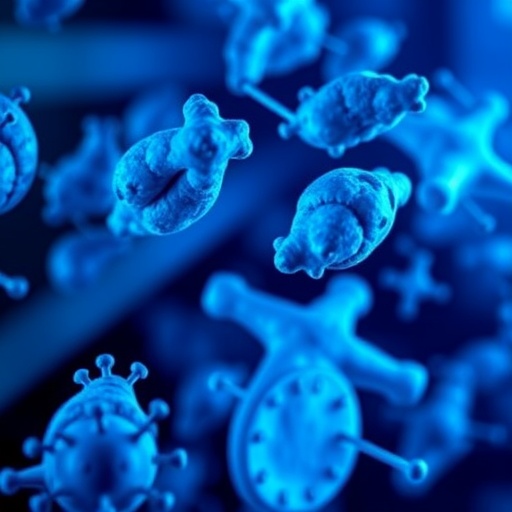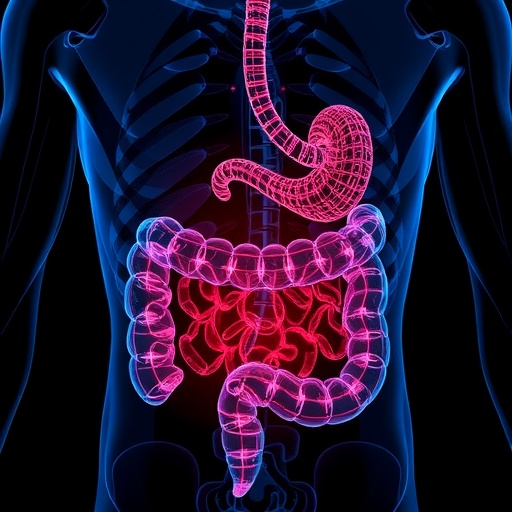Immune checkpoint inhibitors have revolutionized cancer treatment by unleashing the immune system to better attack tumor cells. These molecules, expressed on immune cells, act as crucial regulators that prevent excessive immune activation and collateral tissue damage. Recently, researchers at the University of Zurich (UZH) have uncovered a groundbreaking and previously unrecognized role of one such checkpoint inhibitor, TIGIT, extending its function beyond immune modulation to the promotion of tissue healing. This novel discovery opens up promising avenues not only for cancer immunotherapy but also for the therapeutic management of tissue damage caused by viral infections, chronic wounds, and fibrotic diseases.
Checkpoint inhibitors function fundamentally as molecular “brakes” on the immune response. Their primary purpose is to maintain immune homeostasis by preventing overactivation that can cause host tissue injury. In cancer therapy, blocking these checkpoints—such as CTLA-4 or PD-1—releases these brakes, empowering immune cells to mount a more aggressive attack against malignant cells. However, while much focus has been devoted to these well-known inhibitors, TIGIT (T cell immunoreceptor with Ig and ITIM domains) represents a co-inhibitory receptor expressed on various immune cells, including T cells and natural killer cells, that has not been as extensively studied until now.
The research team led by Professor Nicole Joller from the Department of Quantitative Biomedicine at UZH embarked on a detailed exploration of the role of TIGIT in viral infection models, specifically using mice infected with lymphocytic choriomeningitis virus (LCMV), a rodent-borne virus widely employed as a model to study immune responses. Their experiments revealed that mice genetically deficient in TIGIT suffered more extensive tissue damage following viral challenge. Notably, the most profound injury was observed in the blood vessel walls and the liver, organs critical for maintaining systemic homeostasis and detoxification. These observations highlight TIGIT as an essential regulator actively limiting immune-mediated tissue injury during viral infections.
To understand the mechanism by which TIGIT mediates tissue protection, the investigators analyzed immune cells extracted from infected mice to compare those bearing TIGIT on their surface to those lacking it. The most striking finding was that TIGIT-expressing immune cells significantly upregulated the production of a specific growth factor known for its expansive role in tissue repair and regeneration. This growth factor acts to orchestrate a broad array of repair processes, ranging from cellular proliferation to extracellular matrix remodeling and angiogenesis. Furthermore, the team demonstrated that TIGIT signaling directly promotes the transcriptional activation of the gene encoding this growth factor, establishing a novel pathway linking immune regulation and tissue healing.
This intricate balancing act that TIGIT performs—tempering immune responses while simultaneously promoting tissue repair—is especially important in the context of viral diseases known to inflict serious tissue damage. For instance, infections such as influenza and COVID-19 can precipitate severe inflammation and structural damage in vital organs, notably lung tissue and the vasculature. The new findings by the UZH team suggest that TIGIT’s tissue-protective function could be harnessed therapeutically to mitigate such damage, potentially reducing morbidity and accelerating recovery in patients afflicted by these infections.
Beyond the realm of infectious diseases, the study’s implications extend into chronic pathologies characterized by impaired tissue repair and excessive scarring. Liver fibrosis, a condition marked by the accumulation of fibrous connective tissue in the liver, often results in compromised liver function and can progress to cirrhosis. Similarly, chronic wounds represent a significant medical challenge due to their prolonged state of inflammation and defective healing. By therapeutically activating TIGIT-mediated pathways, it may be possible to stimulate endogenous tissue regeneration mechanisms, offering alternative strategies to conventional treatments that often fall short.
Importantly, this research deciphers an unknown dimension of immune checkpoint biology, positioning TIGIT not only as an immune suppressor but also as a pivotal factor in tissue regeneration. Unlike conventional immunotherapies that focus predominantly on cancer, activating TIGIT could serve as a dual-purpose approach—modulating immune balance while facilitating the repair of tissue post-injury. Such a strategy might revolutionize therapeutic paradigms in immunology and regenerative medicine.
The technical approach used in this study was rigorous and comprehensive. The researchers employed genetically engineered mouse models lacking TIGIT to evaluate pathological outcomes post-infection. Histological studies of tissues highlighted the extent and localization of damage, while molecular assays quantified the expression levels of the growth factor implicated in repair. Subsequent mechanistic analyses elucidated how TIGIT engagement triggers intracellular signaling cascades that culminate in enhanced transcriptional activity of the gene encoding the reparative factor.
By revealing how TIGIT modulates the production of a key reparative cytokine, the study sheds new light on the complex interplay between immune defense and tissue homeostasis. This insight offers a critical piece of the puzzle explaining how immune cells can simultaneously engage in pathogen clearance while minimizing host tissue injury. It underscores the importance of immune checkpoint molecules as versatile regulators beyond their classical roles in immune tolerance.
Furthermore, these scientific advancements invite future research into the development of novel therapeutics that selectively activate TIGIT or its downstream signaling components to promote tissue healing. Drug candidates or biologics mimicking TIGIT’s action could be designed to treat a broad spectrum of diseases encompassing acute viral infections, chronic inflammatory conditions, and fibrotic disorders. The potential to fine-tune immune responses while accelerating regeneration is an exciting frontier in biomedicine.
This discovery also raises intriguing questions about the balance between immune activation and suppression. While checkpoint inhibitors have been widely applied to release immune responses for killing tumor cells, their influence on tissue repair has been less understood. TIGIT’s dual role as an immune modulator and a promoter of repair suggests that future checkpoint-based therapies should consider both immunological and regenerative consequences to optimize patient outcomes.
In summary, the work by Professor Joller and colleagues represents a seminal contribution to immunology. By characterizing the co-inhibitory receptor TIGIT as a critical promoter of tissue-protective functions in T cells during viral infections, they illuminate a novel physiological role for this checkpoint molecule. The findings provide a foundation for redefining checkpoint pathways as therapeutic targets not only for combating cancer but also for enhancing tissue repair and recovery in a variety of clinical contexts.
As the scientific community continues to unravel the complexities of immune regulation, this breakthrough underscores the extraordinary versatility and significance of checkpoint inhibitors. TIGIT now emerges as a promising target at the intersection of immunotherapy and regenerative medicine, heralding new possibilities for treating diseases where immune-mediated tissue damage is a central challenge.
Subject of Research: Animals
Article Title: The co-inhibitory receptor TIGIT promotes tissue protective functions in T cells
News Publication Date: 15-Oct-2025
Web References: 10.1038/s41590-025-02300-w
References: Presented in original article
Keywords: TIGIT, immune checkpoint inhibitor, tissue repair, viral infection, T cells, growth factor, fibrosis, chronic wounds, immune regulation, tissue regeneration, lymphocytic choriomeningitis virus (LCMV), immunotherapy
Tags: cancer immunotherapy advancementscheckpoint inhibitors and tissue repairchronic wound management strategiesco-inhibitory receptors in immunologyfibrotic disease treatment optionsimmune homeostasis and tissue injuryimmune system and tumor attacknovel therapeutic avenues in tissue repairTIGIT role in immune modulationtissue healing mechanisms in immunologyUZH research on immune checkpointsviral infection tissue damage





